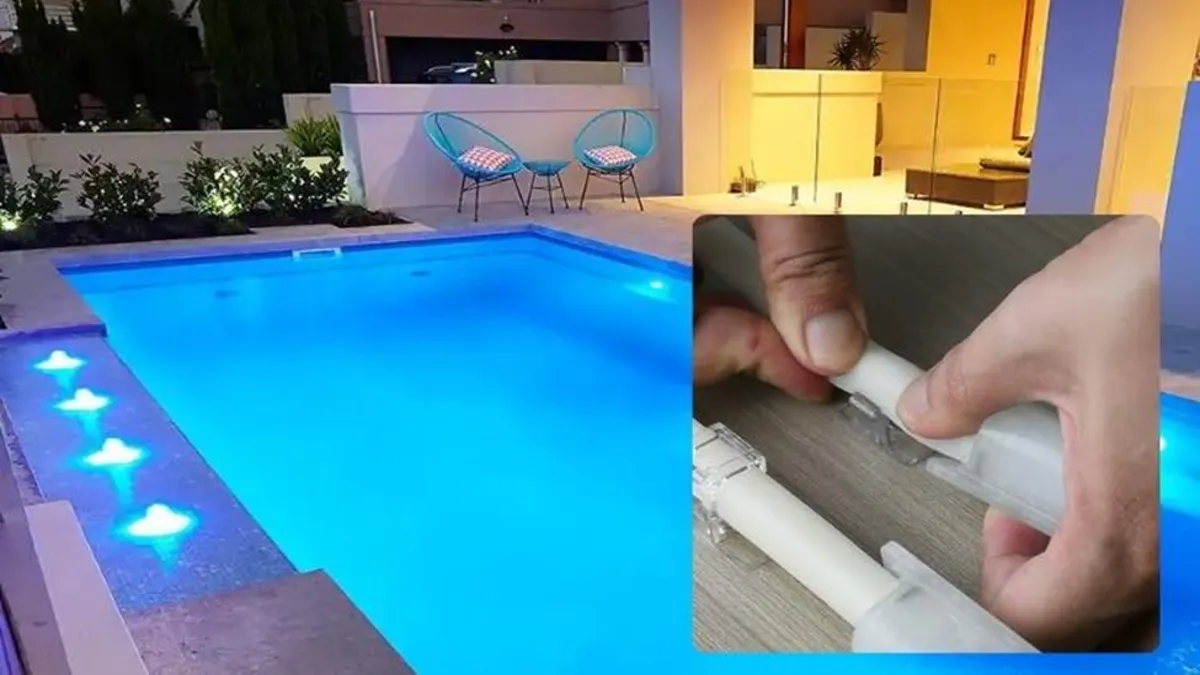Ever scrolled past those backyard pool setups on social media and thought, “how do they make it look so good?” Chances are, it was probably the lighting.
LED lights for pool setups have transformed the proposition altogether. They enhance visibility, assist in safety and ensure the entire place feels like a five-star resort.
Lighting around water should never be winged on a Saturday afternoon. There are some smart moves… and some serious mistakes to avoid.
Let’s talk about how to get it right.
DO: Think About the Bigger Picture
Yes, you want those lights to pop. However, do they conflict with your patio design? Are they bright enough to walk safely around the pool at night but not so intense that they blind you mid-cannonball?
Plan your backyard layout even before you make a purchase.Picture how light moves across the space, where shadows fall, where the pool curves, where people mostly gather. It is not about having a disco ball in your backyard, it is to have balanced lighting.
Pro tip: Keep to warm whites or soft blues for a chill vibe. Keep the rainbow colors for special occasions.
DON’T: Cheap Out on Waterproofing
Don’t assume, just because something is called outdoor, it can handle a splash zone. The thing is, IP rating counts. Look for lights with a minimum IP68 rating if they’re going to be in the water, and at least IP65 if they’re around it.
DO: Use Lighting to Highlight, Not Blind
LEDs are crazy bright nowadays. Awesome, until they point at you from the deep end. Consider indirect lighting. Use the edge of your pool, under steps, or behind landscaping features to hide the source and let the glow do the work.
When you are using led strip lights outside, conceal them along fences and behind bench lines or under coping stones. This way, you get all the illumination with none of the glare.
DON’T: Forget About Color Temperature
Not every white light is the same. Some LEDs tend to the cool (almost blue) end, and others are warm (yellower). When you are going to mix and match different lights in your pool, deck, and landscape, you want to ensure that tones do not clash.
Try to stick with a consistent temperature range. For most backyard settings, something between 2700K and 4000K hits that sweet spot between cozy and clear.
DO: Think About Safety First
Wiring around pools should be sealed correctly and up to standard. If you’re not an electrician, and let’s be honest, most of us aren’t — hire one. Particularly when you have lights that need a low-voltage transformer or are connected to a smart home system.
Water + electricity is not where you want to cut corners. Ever.
DON’T: Install and Forget
LEDs do have a long lifespan, but they aren’t forever. Look for signs of dimming, flickering or water seepage. Conduct a brief inspection every few months, in particular after storms or in case your pool receives intensive use.
Just don’t think that your remote/your app will work for eternity. Technology updates – your lighting setup should too.
DO: Get Creative With Placement
The best LED pool setups are not necessarily the ones in color but in layers. Mix underwater lights with perimeter accents. Add a few lights in planters or under benches. Light the way through the house to the pool, or ease a path to the outdoor shower.
It’s about building a mood, not just flipping a switch.
DON’T: Use One Light for Everything
Lighting a pool with a single giant fixture is just like lighting up a living room with a lamp. You must have more than one source that performs a single task. Use underwater lights for visibility, side lights for ambiance, and overhead or step lighting for safety.
Simple, if one goes out, your whole setup doesn’t go dark.
Bottom Line?
Adding LED lights around your pool is like switching your basic cable into full-fledged surround sound, just another level of the game. But doing it right? That’s where the magic begins.
Take your time. Plan your layout. Use quality gear. And keep that lighting low-key.
You don’t just turn on a pool; you set the stage for memories. Count it.
Common FAQs
Q: Are LED lights safe to install underwater?
Definitely — if they are built for that. Always check for an IP68 waterproof rating. Anything less? Keep it out of the pool.
Q: Can I install pool LEDs myself?
Technically yes. But anything involving voltage near water, it’s smart (and safer) to call a licensed electrician.
Q: How long do LED pool lights last?
The average lifespan of most of the good-quality LEDs is between 25,000 and 50,000 hours. That would be several seasons of summer nights, with adequate installation and maintenance.
Q: Do LED lights attract bugs?
Stick to warmer tones and indirect placement, and you’ll notice fewer uninvited guests buzzing around your pool.
Q: Can I control my pool lights with my phone?
Yep — many modern systems offer smart app integration. You can schedule timers, change colors, and dim brightness from your phone or tablet.

